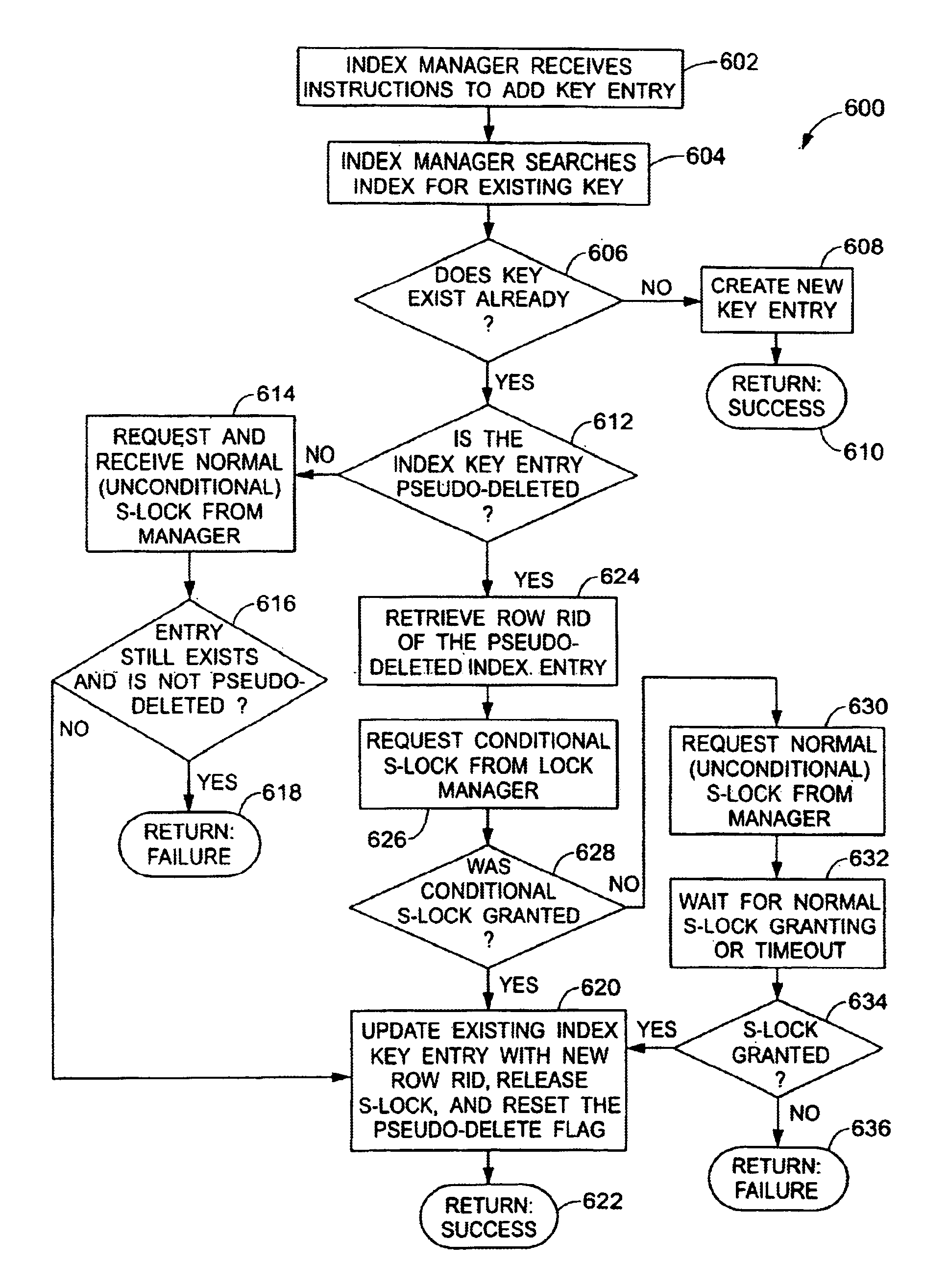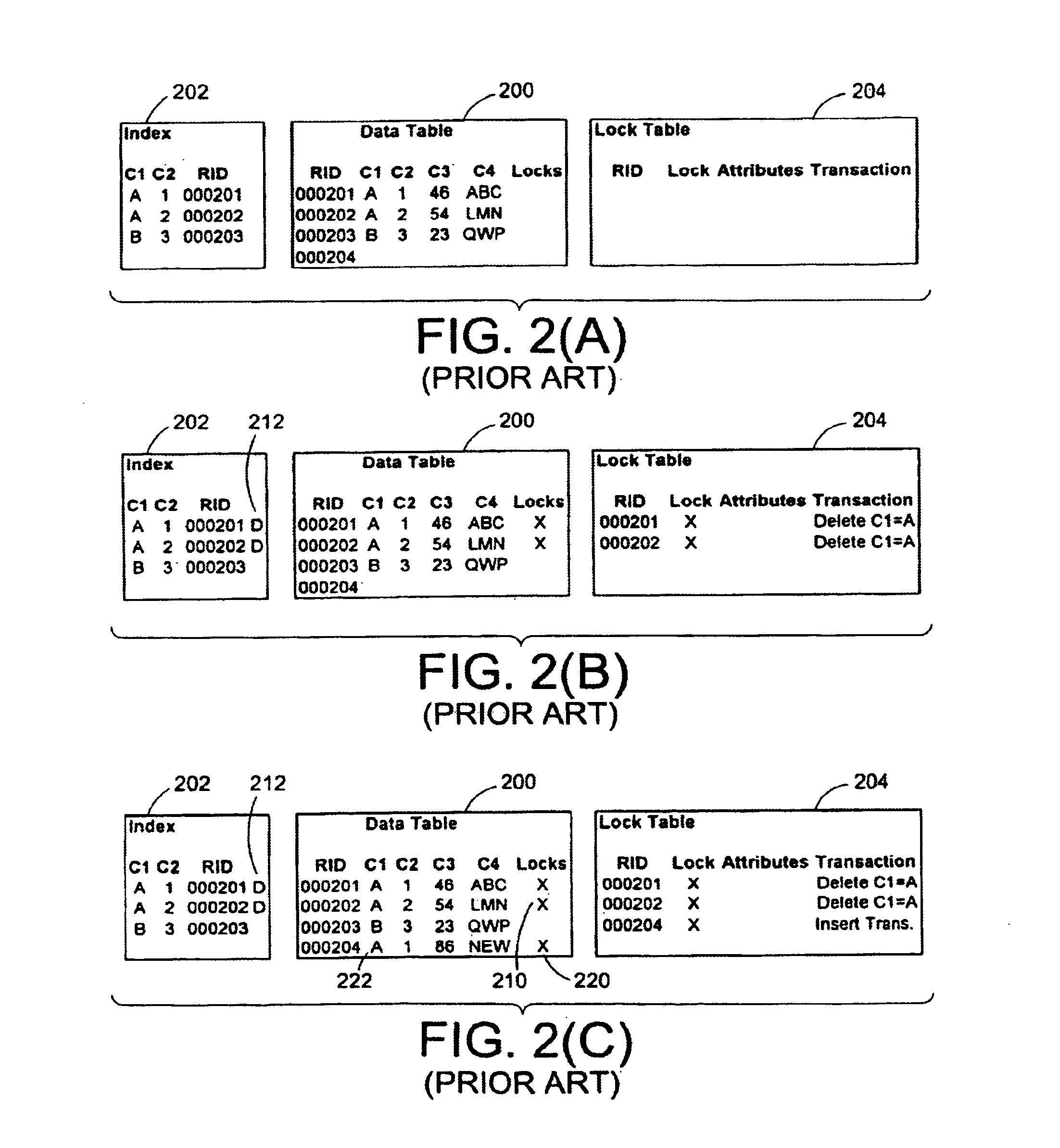System and method for avoiding deadlock situations due to pseudo-deleted entries
a technology of pseudo-deleted entries and deadlock situations, applied in the field of computer database management, can solve problems such as inability to prevent certain “deadlock” situations, data inconsistencies, and prior art methods, and achieve the effects of preventing deadlock situations, preventing deadlocks and corresponding time-outs, and increasing database efficiency
- Summary
- Abstract
- Description
- Claims
- Application Information
AI Technical Summary
Benefits of technology
Problems solved by technology
Method used
Image
Examples
Embodiment Construction
[0041]The present invention improves prior art DBMS by overcoming a potential deadlock situation between two or more transactions. With particular reference to FIGS. 2A-2F and 3A-3F, the limitations of prior art DBMS will be shown. Subsequently, and with particular reference to FIGS. 4A-4F and 5A-5H, the improved DBMS will be described and shown to overcome the limitations of prior art DBMS.
[0042]With reference now to FIG. 2(A)-2(F), a simplified typical transaction sequence according to a prior art DBMS will be described to illustrate lock manager protection of data integrity. FIG. 2(A) shows the initial state of the relevant portion of a data table 200 and its associated index table 202, as well as an associated lock table 204. The index table 202 is a unique key table that operates on a unique key (C1,C2). As seen in lock table 204, at least information on the row identification (“RID”), the lock type (“Lock”), lock attributes (“Attributes”), and the transaction holding the lock ...
PUM
 Login to View More
Login to View More Abstract
Description
Claims
Application Information
 Login to View More
Login to View More - R&D
- Intellectual Property
- Life Sciences
- Materials
- Tech Scout
- Unparalleled Data Quality
- Higher Quality Content
- 60% Fewer Hallucinations
Browse by: Latest US Patents, China's latest patents, Technical Efficacy Thesaurus, Application Domain, Technology Topic, Popular Technical Reports.
© 2025 PatSnap. All rights reserved.Legal|Privacy policy|Modern Slavery Act Transparency Statement|Sitemap|About US| Contact US: help@patsnap.com



